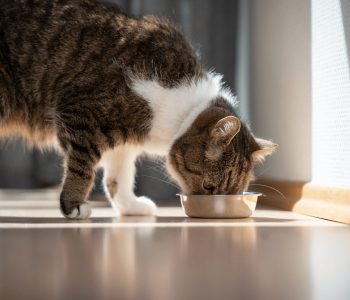The Growing Concern of Raw Pet Food Safety
In recent years, the popularity of raw pet food has increased among pet owners who believe it offers a more natural and nutritious option for their animals. However, a recent incident in Oregon has raised significant concerns about the potential risks associated with feeding pets raw food, particularly when it comes to pathogen contamination. This includes the dangerous H5N1 bird flu virus, which has now been found in raw pet food, leading to severe health consequences for affected pets. This situation serves as a reminder of the importance of safety and quality control in the animal nutrition industry.
Recent Outbreak in Oregon Raises Concerns
A recent outbreak of bird flu in Oregon has highlighted significant risks associated with raw pet food. Two cats were euthanized after consuming raw pet food contaminated with the H5N1 bird flu virus, prompting a public health alert. This incident has raised serious concerns about the safety of feeding pets raw food, especially in light of potential contamination by dangerous pathogens.
Contaminated Product and Source Identified
The two affected cats, living in separate households in Multnomah County, developed severe symptoms after consuming the contaminated Boneless Free Range Chicken Formula from Wild Coast LLC, based in Olympia, Washington. The food had been sold under lot numbers #22660 and #22664 with best-by dates of December. Following the illnesses, veterinarians reported the cases, and state and federal laboratory tests confirmed the presence of bird flu in both the cats and the open containers of food.
Raw Pet Food and H5N1 Virus: A Growing Threat
In light of these findings, officials have issued warnings to pet owners about the potential dangers of raw pet food, particularly products containing poultry, which can be contaminated with bird flu. The H5N1 virus has been a significant concern for both human and animal health, and its spread to domestic pets, including cats, has become more prevalent. According to the U.S. Department of Agriculture, dozens of domestic cats, including at least 24 this year, have contracted the virus, most often after consuming raw food or raw milk that was contaminated.
Symptoms of H5N1 in Pets: What to Watch For
Symptoms of H5N1 infection in pets include fever, lethargy, reduced appetite, red or inflamed eyes, nasal discharge, difficulty breathing, and neurological signs such as tremors, seizures, or even blindness. These symptoms can be severe and, in many cases, have led to the euthanasia of infected animals. Pet owners who feed their pets raw food or milk, or who have pets with access to outdoor birds, should immediately contact a veterinarian if they observe any of these symptoms.
The Risk of Human Transmission and Safety Precautions
While there have been no reports of humans contracting bird flu from handling raw pet food, there remains a risk of transmission if the virus comes into contact with eyes, nose, or mouth. This risk underscores the need for pet owners to exercise caution when handling raw food products, especially those made from poultry.
Ensuring Safety in Animal Nutrition
The incident also emphasizes the importance of ensuring food safety standards in animal nutrition. While raw pet food is often marketed for its perceived health benefits, the potential for contamination with harmful viruses like H5N1 highlights the need for strict quality control and adherence to safety protocols. Pet food manufacturers and suppliers must be vigilant in ensuring their products are free from pathogens that could pose a threat to pets’ health.
Conclusion: Prioritizing Safe and Nutritious Pet Food
As bird flu continues to spread in wild birds and other animal populations, it is crucial for pet owners to stay informed about the risks of feeding raw food and to prioritize safety when selecting products for their pets. Ensuring proper nutrition while protecting against infectious threats should be a primary concern for all involved in the animal nutrition industry.
Source: apnews
